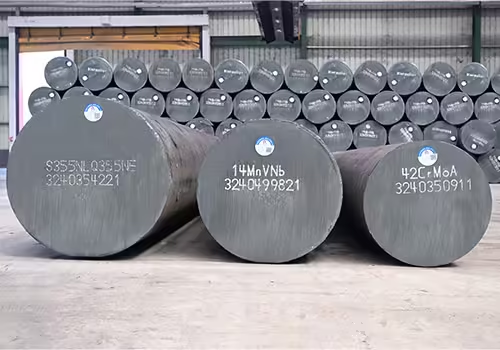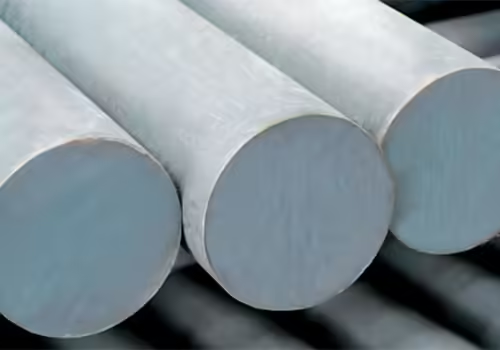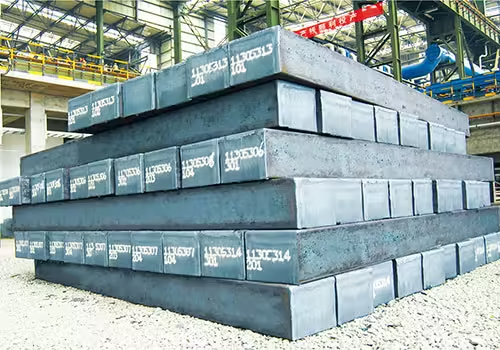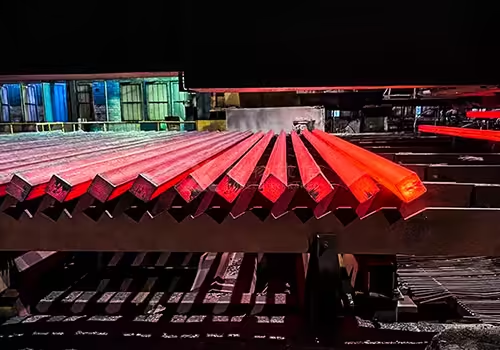
8 Eco-Friendly Benefits of Billet Metal
Table of Contents
Introduction
In recent years, the manufacturing and construction industries have increasingly focused on sustainability. One material that has gained attention for its eco-friendly properties is billet metal. Known for its durability and versatility, billet metal is not only a reliable choice for various applications but also a sustainable one. This article explores eight eco-friendly benefits of billet metal, highlighting why it is a preferred material for environmentally conscious industries.
What is Billet Metal?


Billet metal refers to a solid block of metal that is typically rectangular or cylindrical in shape. It is created through a process called casting, where molten metal is poured into molds and allowed to solidify. The resulting billet can then be further processed into various shapes and products through techniques such as machining, forging, or extrusion. This versatility makes billet metal a fundamental material in numerous industries, from automotive and aerospace to construction and electronics.
The production of billet metal begins with the melting of raw metal, which is then poured into pre-designed molds to form billets. These billets are often heat-treated to enhance their mechanical properties, such as strength and hardness, making them suitable for demanding applications. Common types of billet metal include aluminum, steel, titanium, and copper, each offering unique characteristics that cater to specific industrial needs.
The Eco-Friendly Advantages of Billet Metal

1. Recyclability
One of the most significant environmental benefits of this material is its ability to be recycled indefinitely without losing its essential properties. Unlike many other substances, it can be reprocessed repeatedly, reducing the demand for extracting and refining raw materials, which are often energy-intensive and harmful to the environment. By recycling, it also helps divert waste from landfills, making it a sustainable option for manufacturers.
The recycling process involves melting down the material and reshaping it into new products, which consumes far less energy compared to producing virgin metal. Moreover, the fact that it can be recycled endlessly without degradation ensures it remains a valuable resource for future generations, supporting a more sustainable approach to resource management.
2. Energy Efficiency in Production
The manufacturing process for this material is relatively energy-efficient, especially when compared to other alternatives. Advanced techniques, such as continuous casting, have streamlined production by directly converting molten metal into usable forms, eliminating unnecessary intermediate steps and conserving energy.
Additionally, many production facilities are now integrating renewable energy sources, such as solar and wind power, to further reduce their environmental impact. This shift not only lowers the carbon footprint of the material but also serves as a model for other industries to adopt greener practices, contributing to a broader reduction in energy consumption.
3. Durability and Longevity
Known for its exceptional strength and long-lasting nature, products made from this material often have a significantly extended lifespan. This reduces the need for frequent replacements, conserving resources and minimizing the environmental impact associated with manufacturing and disposal.
For instance, in the construction sector, structural components crafted from this material can endure harsh environmental conditions and heavy loads, ensuring the durability of buildings and infrastructure. This resilience translates into fewer repairs and replacements, ultimately saving resources and reducing waste. Similarly, in industries like automotive and aerospace, its robustness ensures that parts remain functional for longer periods, further enhancing its eco-friendly appeal.
4. Reduced Waste During Manufacturing
The precision machining involved in producing this material ensures that very little waste is generated during the manufacturing process. Unlike other substances that may require extensive trimming or shaping, it can be crafted into the desired form with minimal excess. This efficiency not only conserves resources but also reduces the environmental impact associated with waste disposal.
Advanced techniques, such as computer numerical control (CNC) machining, play a significant role in achieving this precision. These methods allow for highly accurate production, ensuring that the material is used optimally. By minimizing waste and maximizing resource efficiency, these technologies contribute to a more sustainable manufacturing process, aligning with eco-friendly practices.
5. Lightweight Properties
Certain varieties of this material, such as aluminum, are known for their lightweight yet robust characteristics. This makes them particularly valuable in industries like automotive and aerospace, where reducing weight can lead to significant improvements in fuel efficiency and lower greenhouse gas emissions.
For example, in the automotive sector, incorporating lightweight components can enhance vehicle performance and reduce fuel consumption. Similarly, in aerospace, using lighter materials contributes to the overall efficiency of aircraft, resulting in lower fuel usage and a reduced environmental footprint. These benefits highlight how the material supports sustainability in high-performance applications.
6. Corrosion Resistance
This material, especially in its aluminum and stainless steel forms, boasts excellent resistance to corrosion. This property significantly extends the lifespan of products made from it, reducing the need for frequent maintenance or replacements. As a result, fewer resources are consumed over time, making it a sustainable choice for various industries.
Corrosion resistance is particularly crucial in sectors like marine and construction, where materials are often exposed to harsh environmental conditions. By using this material, manufacturers can ensure that their products remain durable and reliable for extended periods. This not only lowers long-term costs but also minimizes the environmental impact associated with producing and disposing of replacement parts.
Together, these properties—reduced waste during manufacturing, lightweight design, and corrosion resistance—demonstrate how this material supports eco-friendly practices across multiple industries. Its combination of efficiency, durability, and sustainability makes it a valuable resource for reducing environmental impact while meeting high-performance demands.
7. Versatility Across Industries
The adaptability of this material makes it a valuable resource in a wide array of sectors, ranging from construction to electronics. Its ability to replace less sustainable options encourages the adoption of eco-friendly alternatives, fostering greener practices across different fields.
For instance, in the electronics industry, it is commonly used to produce heat sinks and protective casings that safeguard sensitive components from damage. In the construction sector, it serves as a reliable material for structural beams and roofing, offering strength and durability. Its broad applicability ensures that it can effectively substitute less sustainable materials in numerous applications, thereby contributing to a reduction in environmental impact. This versatility not only highlights its practicality but also underscores its role in promoting sustainability across industries.
8. Contribution to Circular Economy
This material is a key player in the circular economy, a system designed to reuse and recycle resources to create new products, thereby minimizing waste and maximizing resource efficiency. By integrating it into their manufacturing processes, industries can support a sustainable economic model that prioritizes environmental responsibility.
The circular economy focuses on keeping materials in use for as long as possible, extracting their full value, and then recovering and regenerating them at the end of their lifecycle. Due to its recyclability and long-lasting nature, this material aligns perfectly with these principles. It can be repeatedly reprocessed without losing its essential properties, making it an ideal candidate for sustainable manufacturing. By embracing this material, industries can reduce their reliance on virgin resources, lower waste generation, and move closer to achieving a truly circular and sustainable economy.
Together, its versatility and alignment with the circular economy demonstrate how this material can drive sustainability across multiple industries. Its ability to replace less eco-friendly options and its role in promoting resource efficiency make it a cornerstone of environmentally conscious manufacturing and economic practices.
Applications in Sustainable Industries

Billet metal is used in numerous industries to promote sustainability. Below is a table highlighting some of its key applications:
| Industry | Application | Sustainability Benefit |
|---|---|---|
| Automotive | Engine components, chassis parts | Lightweight, reduces fuel consumption |
| Aerospace | Aircraft frames, landing gear | Durable, enhances fuel efficiency |
| Construction | Structural beams, roofing materials | Long-lasting, reduces maintenance needs |
| Electronics | Heat sinks, casings | Recyclable, minimizes electronic waste |
| Renewable Energy | Wind turbine components | Corrosion-resistant, supports green energy |
Conclusion
Billet metal is a remarkable material that offers numerous eco-friendly benefits. From its recyclability and energy efficiency to its durability and versatility, billet metal is a sustainable choice for a wide range of industries. By incorporating billet metal into their processes, manufacturers can reduce their environmental impact and contribute to a more sustainable future. As the world continues to prioritize sustainability, billet metal will undoubtedly play a pivotal role in shaping eco-friendly innovations.
FAQ
What makes billet metal eco-friendly?
Billet metal is eco-friendly due to its recyclability, energy-efficient production, durability, and reduced waste during manufacturing.
How does billet metal contribute to the circular economy?
Billet metal can be recycled and reused indefinitely, supporting a circular economy model that minimizes waste and maximizes resource efficiency.
Which industries benefit most from billet metal?
Industries such as automotive, aerospace, construction, electronics, and renewable energy benefit significantly from the use of billet metal.
Is billet metal more expensive than other materials?
While billet metal may have a higher upfront cost, its durability and recyclability often make it a cost-effective choice in the long run.






